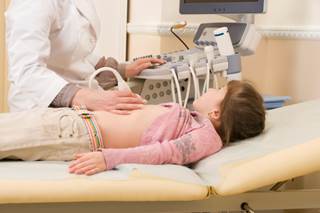|
WINNIPEG — Manitoba will become the first province to pay the added water and electricity costs for dialysis patients who are approved for treatment at home.
Health Minister Sharon Blady says the goal for home hemodialysis patients is not only to lessen the stress of treatment, but to reduce the cost of hospital or clinical treatment.
The number of dialysis patients is increasing with more diabetes patients and an aging population. As a result, Manitoba has among the highest incidence of new patients and prevalence (total patients) of dialysis use in Canada. It’s estimated that each year 80 new patients need dialysis, meaning 14 more clinical spots have to open for treatment — a rate that’s taxing the health-care system.
“We’ve got these challenges where we’ve got increasing numbers,” Blady said Thursday. ‘Once people get trained for it, and know how to do it at home, they find it really empowering.
“To me it does wonderful things,” she added. “We’re able to give a better quality of care at home, which gives a better quality of life, and it saves money that can be reinvested for caring more folks.”
The additional hydro and water costs for home treatment range from about $700 to $2,000 a year in Winnipeg, she added.
The reimbursement program will be administered by the Manitoba Branch of the Kidney Foundation of Canada. More details about the provincial reimbursement program will be available for those who are eligible in early October. It will be backdated to last April.
Blady said the operating cost for home dialysis is about 50 per cent less than what it would be in a hospital. Home treatment reduces exposure to hospital bugs and infections.
Mukhtiar Singh said when he began nocturnal home hemodialysis in 2009 — he’s been on dialysis for 20 years—he saw his utility bills jump by $1,800 a year.
Singh, 67, is member of a patient advocacy group that pushed for the reimbursement program. His treatment takes about eight hours five nights a week, with his home water-treatment system being the largest expense.
He said if the province can get 300 people on home hemodialysis, the health-care system could save $40,000 to $50,000 a year per patient.
“We’d be looking at $12 million to $15 million per year saving to Manitoba Health,” he said. “It saves money. It takes pressure off the system, and the patient’s quality of life gets better.”
Dr. Mauro Verrelli of the St. Boniface General Hospital, medical director for Manitoba Renal Program, said many patients with less complex treatments can be treated at home.
“I think the strength of this program is that people who may have not wanted to do home hemodialysis because they were worried about paying up to $2,000 a year in utility bills now can say they don’t have that problem,” Verrelli said.
He said a reasonable target is to have 30 per cent of hemodialysis (artificial kidney machine) and peritoneal dialysis (blood is cleaned inside the body, using it as a natural filter, rather than being cleaned outside in a machine) patients treated at home.
He said right now four per cent of hemodialysis patients are treated at home. About 20 per cent of peritoneal dialysis patients are treated at home.
“If we went to 30 per cent over the next few years, that would be great,” he said. “Unfortunately, there is a net yearly growth that is taxing the health system, and that everybody is striving to do their due diligence to contain, but diabetes rates are increasing, chronic disease rates are increasing and people are aging. More people need dialysis.”
» Winnipeg Free Press
Republished from the Brandon Sun print edition August 21, 2015
|
 Log in to explore the world's most comprehensive database of dialysis centres for free!
Log in to explore the world's most comprehensive database of dialysis centres for free!  Professional dialysis recruitment
Professional dialysis recruitment

